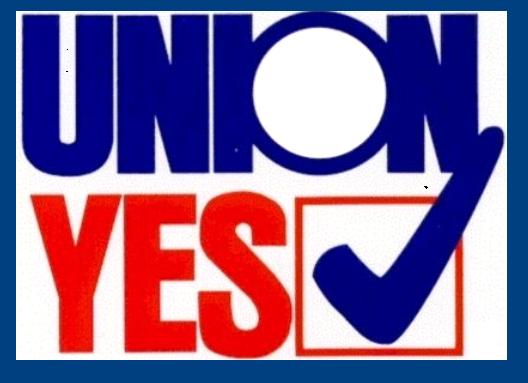Unbeknownst to many, there are actually several different types of labor unions, and each plays a huge role in advocating for workers’ rights, ensuring fair wages, and improving working conditions. The structures and purposes of various labor union types also change and evolve as the workforce they’re based on does. Additionally, depending on the state you live/work in, you may have certain rights regarding joining or paying union dues. This article will discuss the various types of labor unions that exist today, giving you insights into their unique characteristics and roles within the broader labor movement.
Craft Unions
Craft unions represent workers who have specific skills or trades, like electricians, carpenters, plumbers, and machinists. These unions tend to be organized around a particular craft or trade, and focused on protecting the interests of workers within that profession.
Craft unions were among the earliest types of labor unions, forming during the 19th century when skilled workers wanted to keep less skilled laborers out of their trades. Stemming from this, craft unions set high standards for entry into the trade, making sure their members are skilled and competent.
Examples:
- The International Brotherhood of Electrical Workers (IBEW) is one of the most prominent craft unions in the United States, representing electrical workers across various industries.
- The United Brotherhood of Carpenters and Joiners of America (UBC) is another example that represents carpenters and woodworkers.
These days, craft unions play a significant role in making sure skilled tradespeople receive fair wages and working conditions, particularly in industries that really need specialized skills.
Industrial Unions
Unlike craft unions, industrial unions represent all workers in a particular industry, regardless of their specific job roles or skills. These unions are designed to provide one voice for all employees in an industry, from production line workers to clerical staff.
Industrial unions rose in the early 20th century, when industries like manufacturing, automotive, and steel had large numbers of workers employed in various roles. The goal of industrial unions is to make sure all workers within an industry benefit from collective bargaining agreements, regardless of their specific job functions.
Examples:
- The United Auto Workers (UAW) is one of the most well-known industrial unions, representing workers in the automotive, aerospace, and agricultural implement industries.
- The United Steelworkers (USW) is another major industrial union, representing workers in the steel, paper, rubber, and chemical industries.
Industrial unions have made huge strides in securing better wages, benefits, and working conditions for millions of workers, particularly in industries more susceptible to the power of collective bargaining.
Public Sector Unions
Public sector unions represent employees who work for government entities at the local, state, or federal levels. These unions have a huge role in negotiating wages, benefits, and working conditions for public employees, including teachers, police officers, firefighters, and other civil servants.
Public sector unions tend to face challenges unique to them, like legal restrictions on strikes and negotiating with government employers that may have limited budgets. Public sector unions have triumphed over many of these challenges, securing important benefits for their members, including pensions, health care, and job security.
Examples:
- The American Federation of State, County, and Municipal Employees (AFSCME) is one of the largest public sector unions in the United States, representing government employees across various levels of government.
- The National Education Association (NEA) represents teachers and other education professionals, advocating for better pay, benefits, and working conditions in the education sector.
Public sector unions continue to be a vital force in making sure government employees receive fair treatment and compensation, especially when budget cuts and privatization efforts are rampant.
General Unions
General unions are a more flexible approach to union membership, and represent workers from various industries and job types. General unions are open to workers from any sector, a stark contrast to craft and industrial unions.
General unions are great for workers in smaller industries or those in a specific field that doesn’t have a strong union presence. These unions give a collective voice to workers that would otherwise be overlooked by the general labor movement.
Examples:
- The United Food and Commercial Workers (UFCW) is a general union that represents workers in the retail, meatpacking, and food processing industries, among others.
- The International Longshore and Warehouse Union (ILWU) represents a wide range of workers, from dockworkers to warehouse employees.
General unions offer a flexible and inclusive approach to union membership, making them an important option for workers across various sectors.
Federations and Umbrella Organizations
Federations are larger organizations that combine multiple unions under one umbrella. These federations coordinate collective bargaining, political advocacy, and labor actions across several unions, giving the overall labor movement a more focused, collective voice.
Federations amplify the power of individual unions, so they can work together on common goals and challenges. By uniting multiple unions, federations have greater influence on policy decisions, labor laws, and industry standards.
Examples:
- The American Federation of Labor and Congress of Industrial Organizations (AFL-CIO) is the largest federation of unions in the United States, representing millions of workers across various sectors.
- The Change to Win Federation is another prominent federation, representing unions that have split from the AFL-CIO to pursue different strategies and goals .
Federations coordinate the efforts of multiple unions, keeping the labor movement strong and effective at advocating for workers’ rights.
Emerging and Hybrid Unions
There are also many new types of unions emerging to represent new employment modalities like gig workers, freelancers, and other non-traditional employees. These emerging unions seek to fill the gaps left by traditional employment models being replaced by more flexible, but often less secure, arrangements.
Emerging unions often focus on issues specific to the gig economy, such as fair pay, job security, and benefits. These unions are also exploring new ways to organize and represent workers, using technology and innovative approaches to build solidarity among members.
Examples:
- The Freelancers Union is a prominent example of an emerging union, representing independent workers in various fields, from graphic design to writing.
- The rise of tech worker unions, such as those formed by employees at companies like Google and Amazon, reflects the growing recognition of the need for collective representation in the tech industry.
Emerging and hybrid unions are the labor movement’ answer to the evolving nature of the modern workforce, advocating for the rights of workers in new and innovative ways.
The Impact of Different Labor Unions
An understanding of the different types of labor unions is essential for anyone interested in the labor movement or seeking information about how unions can impact their work life. Whether it’s craft unions protecting skilled trades, industrial unions uniting entire industries, or emerging unions representing gig workers, each type of union plays a huge role in advocating for workers’ rights and improving working conditions.
These unions will remain important in making sure that all workers have a voice and the ability to secure fair treatment in the workplace well into the future. Whether you’re considering joining a union, need information regarding employment law NJ, or simply want to learn more about the labor movement, knowing the types of unions that exist can help you understand the options available, and the important work being done to protect workers across various industries.




